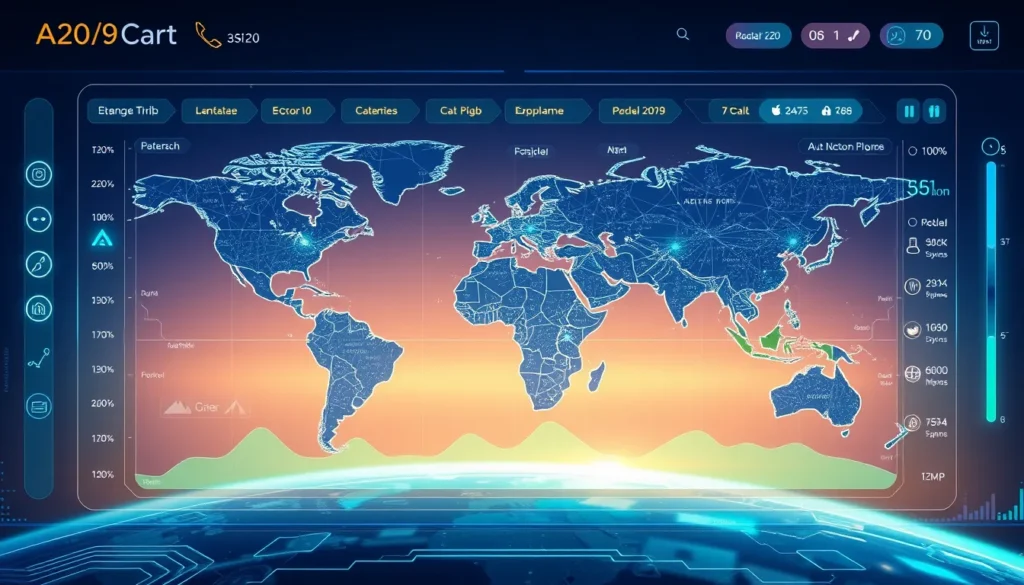Now Reading: Empathetic AI: Transforming Human-Centric Tech
-
01
Empathetic AI: Transforming Human-Centric Tech
Empathetic AI: Transforming Human-Centric Tech

Empathetic AI: Transforming Human-Centric Tech
In an era of rapid technological advancements, the call for a human-centric approach in technology has grown louder. Experts advocate for integrating empathy into artificial intelligence, arguing that the future of tech lies not only in innovation but in making technology more attuned to human needs. This article explores how empathetic AI can revolutionize our interaction with technology by fostering trust, clarity, and a deeper connection.
The Importance of Empathetic AI in Modern Technology
Traditionally, artificial intelligence has been associated with cold logic and impersonal interactions. However, the integration of empathy in AI development is shifting perceptions. Empathetic AI helps bridge the gap between advanced automated systems and the human experience. By incorporating human-centric AI principles, companies can deliver solutions that address not only efficiency but also emotional engagement. This approach is pivotal for:
- Building consumer trust
- Enhancing user experience
- Bridging the gap between technology and human emotion
The Evolution from Fear to Fluency
One of the significant challenges associated with AI has been public fear – from concerns about job displacement to ethical dilemmas. Historically, AI initiatives have sparked resistance due to uncertainty and a lack of human touch. Transitioning from an environment of fear to one of fluency, empathetic AI redefines user interactions by creating systems that not only perform tasks efficiently but also communicate in a relatable manner. This transition involves:
- Transparency about how AI works
- Clear communication of benefits
- A human-centric focus in design and implementation
By adopting these strategies, developers can demystify AI, making its benefits more accessible and appealing. The incorporation of empathy into AI functionalities helps to ensure that the technology remains a supportive tool rather than a source of distress.
Integrating Empathy into AI Development
The shift towards a more humanized technology landscape means rethinking the role of empathy in AI. Incorporating empathetic AI requires a fundamental change in both the design and deployment of these systems. For example, developers are now focusing on making algorithms that adapt to the emotional cues of users. This can be achieved through:
- Contextual understanding of user interactions
- Dynamic adaptation to user emotions
- User-friendly interfaces that prioritize clear communication
These aspects not only lead to a smoother interaction but also help in reducing the alienation that often accompanies technological advancements. For more insights on how technology is evolving, visit the official site of OpenAI.
Benefits of a Human-Centric Approach
Implementing empathetic AI yields tangible benefits for both technology providers and end users. Companies that prioritize human-centric AI rollouts can expect:
- Boosted consumer confidence
- Enhanced user engagement
- Reduced resistance to technological change
Furthermore, empathetic AI helps establish a dialogue between technology and its users, creating a cooperative environment. This approach transforms AI from a tool of disruption into a catalyst for collaborative innovation. Embracing this model not only addresses technical challenges but also promotes societal well-being.
Addressing Challenges and Building Trust
Though the concept of integrating empathy in AI is promising, it comes with its challenges. Organizations must ensure that while systems are designed for speed and accuracy, they also incorporate real human touchpoints. Developers are tasked with crafting systems that are sensitive to the emotional state of users. This means:
- Investing in user research to understand emotional triggers
- Implementing design thinking methodologies
- Ensuring robust testing to balance functionality and empathy
By proactively addressing these challenges, companies can transform potential drawbacks into opportunities for innovation. Empathetic AI is not just about sophisticated algorithms; it is about embedding compassion into technology. As the field evolves, it is crucial to maintain this balance to fully exploit the potential of AI-driven solutions.
Real-World Applications and Future Implications
The integration of empathy in AI is not merely theoretical. It has practical applications that span across various industries—from healthcare to education, and from customer service to workforce management. For instance, in the healthcare sector, empathetic AI can assist in patient diagnostics by adding a layer of sensitivity to traditional analysis. In educational settings, empathetic algorithms can adapt learning experiences based on a student’s emotional and cognitive state.
Looking ahead, the future appears bright for empathetic AI as a transformative force. As more companies invest in this technology, the landscape will shift towards innovation that blends technical prowess with a genuine understanding of human emotions. This, in turn, will foster deeper trust between technology and its users, paving the way for a more harmonious coexistence.
Conclusion
The journey from fear to fluency in AI technology is underpinned by the integration of empathy. Empathetic AI stands as a beacon for a future where technology not only performs tasks but also connects with us on a personal level. This human-centric approach is essential for transforming public perception, building trust, and ensuring that technological advancements serve to enhance, rather than disrupt, our daily lives. By striving for a balance between innovation and empathy, the tech industry can create a future that is both advanced and profoundly human.
Overall, the rise of empathetic AI signifies a critical turning point in the development and deployment of new technologies. It represents an evolution where user engagement and ethical practices are prioritized, ultimately leading to a more inclusive, compassionate, and effective technological ecosystem.

























